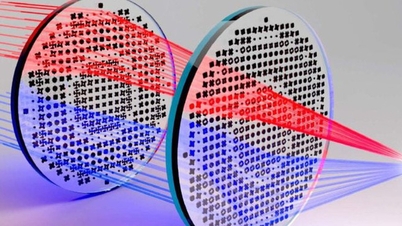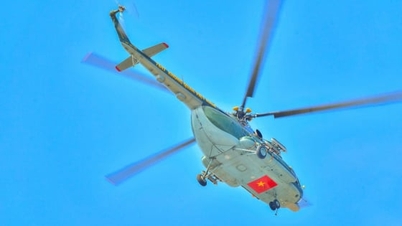2027 will mark a major milestone: the iPhone line enters its 20th generation. When that happens, there will undoubtedly be big celebrations, dense reviews, and countless debates in the tech community. But right now, the first leaked information about the iPhone 20 Pro Max is causing quite a bit of controversy.

Rear camera system on iPhone 17 Pro Max and 17 Pro. Photo: PhoneArena
What's even more surprising is that Apple may use camera sensor technology that was released in 2024 for the iPhone of 2027. It sounds paradoxical, but it all happens because Apple wants to prioritize stability and efficiency, instead of chasing the endless technology race.
Apple's strategy
It's no coincidence that Apple is often seen as "slow" in many areas.
Their cameras don't always have the biggest sensors. Foldable phones aren't here yet. Battery life is never at the top of the charts. The screens are rarely the brightest, and their anti-reflective capabilities are worse than some Androids.
Recently, Apple has also been criticized as being slow in the AI race, while competitors continuously announce new features.
But the results are what matter. Photos taken from iPhones, even the standard versions like the iPhone 14 or iPhone 15, are enough to satisfy many users. Color consistency, video stabilization, intelligent light processing, and natural portrait effects make the iPhone a reliable choice.
Apple does not follow trends, but chooses when the technology is mature to deploy.
Even though the iPhone takes great photos, users still face an annoying limitation: too few camera options.
iPhones usually only have 3 basic configurations: the standard line with the main camera and ultra-wide angle, the Pro line adds telephoto, and lines like SE or 16e are even more minimalist. This creates a feeling of monotony for those who like to explore smartphone photography.
Meanwhile, Android has turned the camera into a creative playground. Some phones have large 1-inch sensors, many have 10x optical zoom, 200-megapixel sensors, variable aperture lenses, and even fixed focal length 35mm like professional cameras.
From larger pixels, multi-layer sensors to dedicated telephoto lenses, Android is constantly experimenting with bold configurations that Apple has never touched.
This diversity makes Android more appealing for photography enthusiasts in terms of creative experience.
LOFIC 2024 sensor will appear on iPhone 20 Pro Max
Apple is reportedly testing a sensor called LOFIC – Lateral Overflow Integration Capacitor. This technology is not entirely new.
As early as 2019, a prototype was demonstrated at a technology fair, and in 2024 OmniVision officially introduced the OV50K40 sensor, the first sensor to apply TheiaCel combining the company's exclusive HDR with LOFIC.
The sole purpose of this technology is to solve the most difficult problem in photography: maintaining detail when the scene has extreme light contrast, such as shooting in harsh sunlight or in backlit environments.
iPhone 20 Pro Max concept video. (Source: Léoraxis)
In addition to the OV50K40, OmniVision also launched the OV50R and OV50X sensors, of which the OV50X belongs to the high-end sensor group with a size of approximately 1 inch. This is considered a big step forward for smartphone cameras, which have always been limited by small sensor areas compared to professional cameras.
The fact that Apple is considering bringing this technology to the iPhone 20 Pro Max shows that the company is prioritizing actual photo quality instead of chasing numbers or marketing.
Apple doesn’t want to be first, it wants to be best. With that in mind, LOFIC technology could be the ideal choice. After years of existence and testing, the sensor will bring clear benefits to users.
LOFIC helps the sensor capture more light without overexposing the highlights or losing detail in the shadows. This is especially important for iPhone users who like to shoot videos and photos in complex lighting conditions.
If Apple really equips this sensor on the iPhone 20 Pro Max , users will have a device with superior light control and brightness range compared to previous generations, even if the sensor parameters are not the "latest".
Utilizing sensor technology from 2024 on a 2027 iPhone model may be skeptical, but in terms of Apple's philosophy, it's a reasonable move.
Apple doesn’t chase after unfinished technology. They take what’s proven and then refine it to create the best user experience.
The iPhone 20 Pro Max may not have the best camera specs, but it could very well be the iPhone with the best photo and video quality ever. And that’s what matters to Apple.
(According to PhoneArena, Macworld)
Vietnamnet.vn
Source: https://vietnamnet.vn/iphone-20-pro-max-flagship-dinh-cao-su-dung-cong-nghe-camera-cu-gay-tranh-cai-2458762.html



![[Photo] Panorama of the Patriotic Emulation Congress of Nhan Dan Newspaper for the period 2025-2030](https://vphoto.vietnam.vn/thumb/1200x675/vietnam/resource/IMAGE/2025/11/04/1762252775462_ndo_br_dhthiduayeuncbaond-6125-jpg.webp)
![[Photo] Ho Chi Minh City Youth Take Action for a Cleaner Environment](https://vphoto.vietnam.vn/thumb/1200x675/vietnam/resource/IMAGE/2025/11/04/1762233574890_550816358-1108586934787014-6430522970717297480-n-1-jpg.webp)

![[Photo] Ca Mau "struggling" to cope with the highest tide of the year, forecast to exceed alert level 3](https://vphoto.vietnam.vn/thumb/1200x675/vietnam/resource/IMAGE/2025/11/04/1762235371445_ndo_br_trieu-cuong-2-6486-jpg.webp)
![[Photo] The road connecting Dong Nai with Ho Chi Minh City is still unfinished after 5 years of construction.](https://vphoto.vietnam.vn/thumb/1200x675/vietnam/resource/IMAGE/2025/11/04/1762241675985_ndo_br_dji-20251104104418-0635-d-resize-1295-jpg.webp)

































































































Comment (0)